From personalities that continue to inspire to those who met tragically predictable ends, Colorado has been the home of many influential historical figures since long before it became an official US state in 1876. The names of some are enshrined on prominent buildings and roadways, and others are forgotten by almost everyone other than Colorado history buffs.
But regardless of whether you’re familiar with anyone on this list or not, each has left an indelible mark on the state in some way, and the legacy of some of them can be felt far beyond the borders of Colorado.
Here are five important historical figures in Colorado, in no particular order:
Emily Griffith

At the tender age of 16, Emily Griffith and her brother were asked to financially support their parents, who had become too weak to work on their Nebraska farm. When Griffith, who looked young for her age, applied to be a teacher, the local schoolmaster was skeptical that she’d be up for the job. But after easily passing a series of especially tricky tests, she landed the job, which required her to teach a broad range of students aged six to those well into their twenties.

Since Griffith only had an eighth-grade education, she was known to spend her nights studying to keep up with her more advanced students. She recognized early on in her teaching career that many of the parents of her students couldn’t read, write, or understand math because they’d spent their youths working on their family farms and not in school. After an especially harsh winter that dashed Griffith’s farming hopes completely, Emily convinced her family to move west to Denver, where she quickly applied for a position at Denver Public Schools.
Strangely enough, she lied on her application, not claiming she was older, but younger. Despite being nearly 30, she claimed she was 15 so that she wouldn’t be considered an “old maid” because she was still unmarried. This was such an important issue that Griffith chose to omit her 11 years of teaching experience and start again as if she were completely new to the job. She worked as a substitute teacher before getting promoted to a position at an elementary school in the then predominantly Black, Asian, and Jewish Five Points neighborhood of Denver.
Griffith believed that racist policies were keeping her students from receiving a quality education and their parents from getting high-paying jobs, so she taught English to immigrants and instructed her students’ families in all manner of subjects for free. Recognized for her teaching talent and tireless work ethic, she eventually became the Deputy State Superintendent of Instruction, but still insisted on teaching night classes.

In 1916, she was given an old condemned building to turn into a school after years of petitioning. Griffith’s dream was to create a place that could give opportunities to those who didn’t have access to them. When she retired in 1933, the Opportunity School she founded boasted over one million graduates. Now called the Emily Griffith Technical College, Griffith’s heart for empowering others through knowledge stands up as a Colorado legacy that continues to improve and inspire lives.
Spencer Penrose
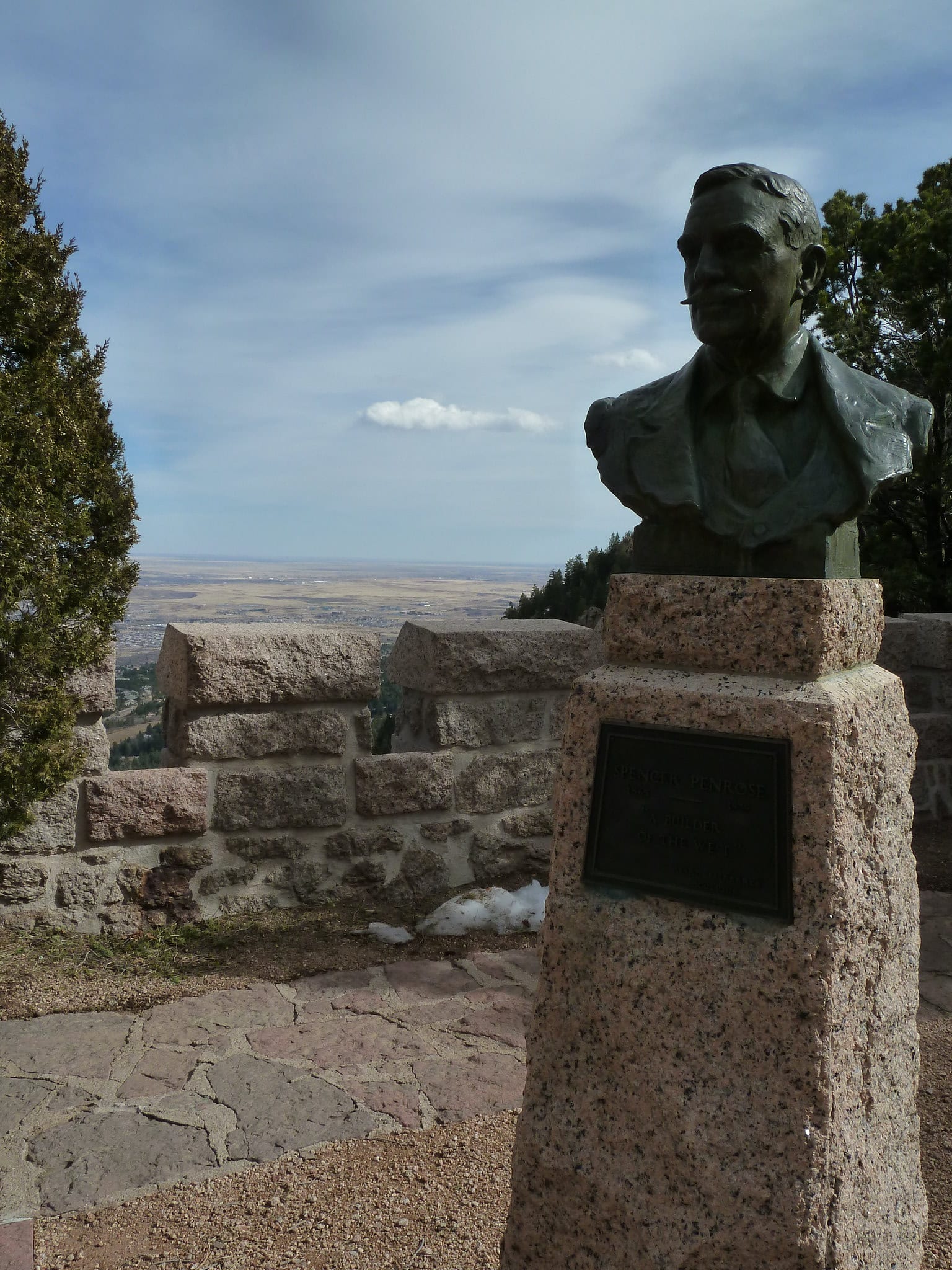
If you’ve ever fawned over the animals at the world-famous Cheyenne Mountain Zoo or enjoyed a decadent meal at one of Broadmoor’s absurdly luxurious restaurants in Colorado Springs, you can thank Spencer Penrose. Penrose was born in 1865 to a wealthy Philadelphia family, which boasted a doctor, a famous geologist, and a US Republican senator. Graduating last in his class at Harvard, Penrose, who had earned a reputation for being a playboy, turned down a cushy job in Philly and headed west with no idea of what he’d do.

After a series of failed investments across New Mexico, Texas, Colorado, and Utah, Penrose’s boyhood friend Charles L. Tutt invited him to join a Colorado Springs real estate firm. Penrose agreed and bought in for $500. Soon after, the two struck gold during the Cripple Creek gold rush, and the pair spent the next 25 years mining gold and copper in the region. With a vast fortune in hand, Penrose built the:
His wife, Julie, founded the Colorado Springs Fine Art Center, helped expand Colorado College, and was key in resurrecting the Central City Opera. Some might look upon Penrose’s legacy and understandably deduce that he was a man already born into incredible wealth and prominence who fell into far more luck and influence than he deserved. Others could conclude that he was rewarded handsomely for his decision not to do what was expected of him by instead pursuing a life of adventure and uncertainty out west.

But any way you slice it, the Pikes Peak region is a more interesting and livable place because of Spencer Penrose’s legacy.
Molly Brown

When it comes to universally famous Colorado residents, no one is more fascinating, beloved, and ubiquitous than Molly Brown. Born in Hannibal, Missouri, in 1867, Margaret Tobin Brown came from a progressive family that believed young women should receive the same educational opportunities as young men. Historians point to the Tobin family’s philosophy and values as foundational beliefs that shaped her life indelibly.
Brown stayed in school until the age of 13, when she took a job at a local factory and became well-versed with the same long hours and dismal wages that most in her community were already familiar with. After realizing a childhood dream, Brown moved west to Leadville with her brother Daniel, where she took a job at a department store and became active at a local Catholic church.
Unlucky prospectors were a common sight in the mountain town, and they were frequently exploited with dangerous working conditions and low pay. Brown sympathized with her community and began volunteering at a soup kitchen and took on other charity efforts. to help.

She soon married a mining engineer named J.J. Brown. J.J. was eventually promoted to mine superintendent during the Silver Crash of 1893, one of the worst economic downturns in Colorado history. Leadville was hit extraordinarily hard by the crisis, but J.J. discovered gold in a local mine soon after, and the Browns became millionaires and bought a home in Denver.
Brown joined a group of progressive reformers and ran for a state senate seat before withdrawing her candidacy and traveling the world.
Denver newspapers published Brown’s firsthand accounts of India’s caste system that she witnessed during her travels. According to historians, J.J. Brown wasn’t nearly as progressive as Molly, and he’s recorded repeating a popular saying of the time that a woman’s name should only appear in a newspaper after birth, marriage, or death. After 23 years of marriage, the Browns signed a separation agreement but were never officially divorced.
Dubbed the “Unsinkable Molly Brown,” the world largely remembers Brown for surviving the Titanic disaster of 1912. She later wrote about her harrowing experience for the Newport Herald and described being ushered onto a lifeboat filled with mainly women and children as the Titanic sank.
Using her knowledge of foreign languages, she consoled those who didn’t speak English and helped to raise $10,000 from the first-class passengers to help survivors of the tragedy before the boat that rescued her docked in New York. The ordeal made Brown famous in Colorado and far beyond, and word soon spread about how she helped the ship’s survivors.
Two years later, the wives of miners striking in Ludlow, Colorado, wrote her and asked her to intervene on their behalf. Tragically, at least 20 men, women, and children were massacred shortly after by guards hired by the mining company, which was owned by the famous entrepreneur John D. Rockefeller. After the violent event, Brown was credited for helping to convince Rockefeller to end his harsh business practices.
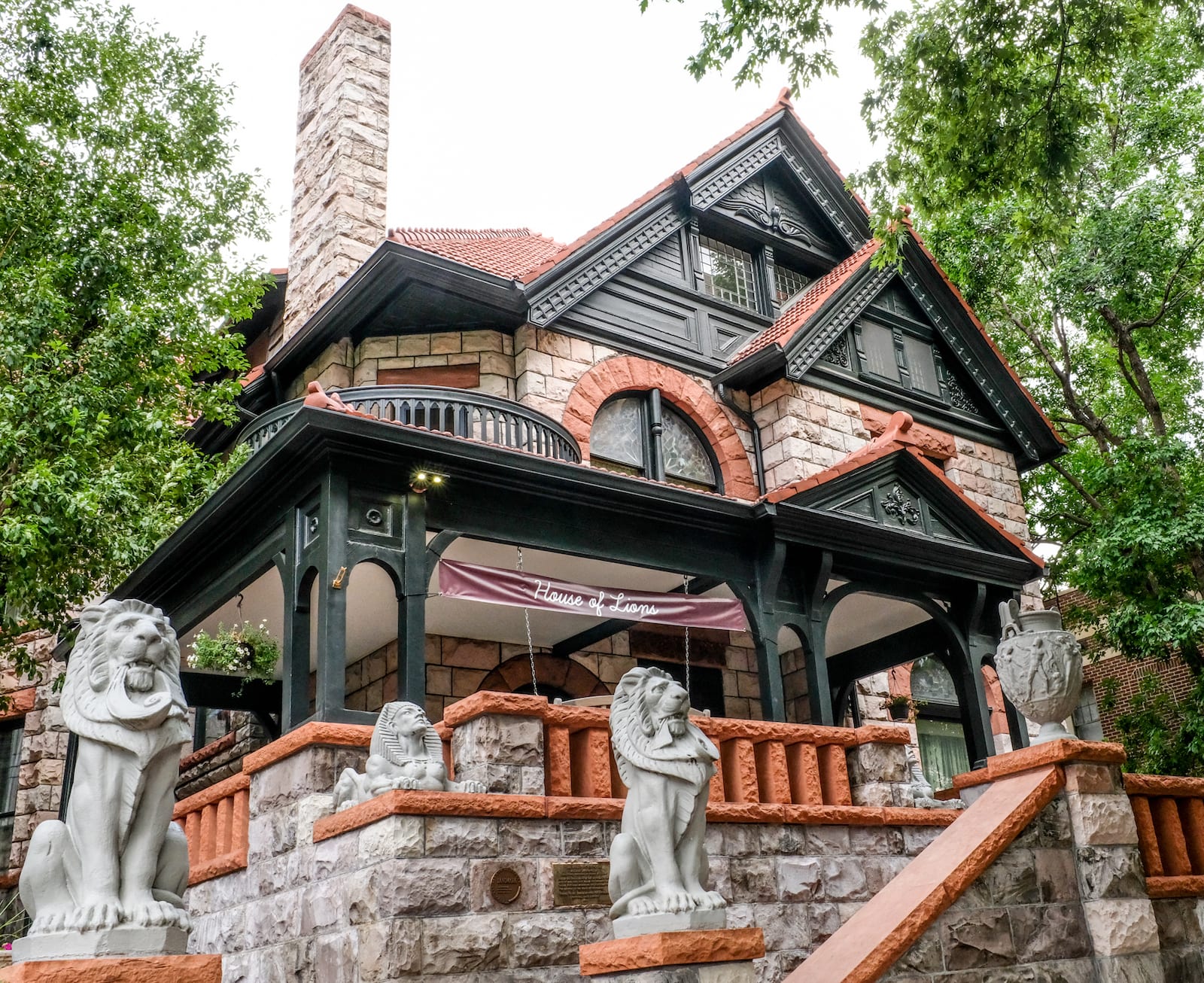
She later advocated for a national minimum wage and an eight-hour workday and became an iconic and influential force in the Women’s Suffrage movement. Brown’s tenacity, self-sufficiency, and uncompromising independence helped define what was then known as the “New Woman” of the 1920s. You can learn more about this incredible woman at her former Denver mansion, now called the Molly Brown House Museum.
Horace Tabor

Once affectionately dubbed the Silver King, Horace Tabor’s movie-worthy legacy doubles as a cautionary tale that could easily apply to our modern world. After a humble career as a stonecutter, Tabor moved to Kansas to try his hand at farming before setting his sights even further west to Colorado in search of gold and silver.
After some modest mining success, Tabor opened a shop in Leadville and gave two miners free equipment in exchange for one-third of their profit. The miners struck silver, and Horace, his wife Augusta, and their son Max became fabulously wealthy.

The newly minted Tabors quickly relocated to Denver, where Horace created several mining companies and founded an opera house. Tabor then launched a political career and became Colorado’s Lieutenant Governor, senator, and eventually the United States Secretary of the Interior. Horace and Augusta were divorced in 1883 after she complained of his lavish lifestyle and unnecessary spending. That same year, Tabor married Elizabeth “Baby Doe” McCourt.
Many Coloradans viewed Horace’s new relationship as scandalous, and the couple earned a reputation for buying expensive clothes and throwing extravagant parties. Predictably, Tabor’s good times didn’t last forever. After three unsuccessful gubernatorial runs, the Silver Crash of 1893 wiped out Tabor’s fortune almost as quickly as he’d stumbled upon it.
In 1897, he begrudgingly accepted a job as Denver’s Postmaster, which was undoubtedly a stinging and public humiliation for the once-successful businessman and influential politician. He died the following year of complications from appendicitis, insisting until the very end that his mines would one day be profitable again.
Augusta, Horace’s first wife, became one of Denver’s wealthiest residents, but Baby Doe was rumored to have spent the last 30 years of her life in destitution, living in a tool shed adjacent to one of the Tabor family mines.
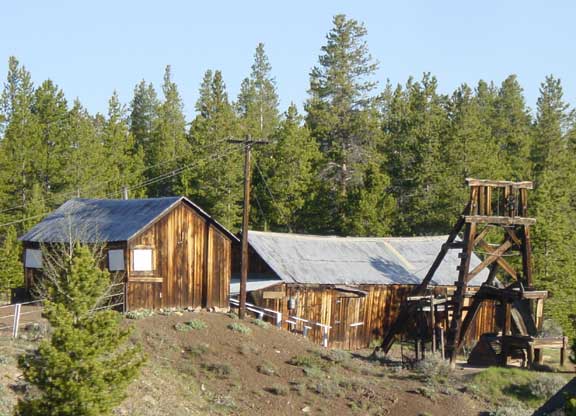
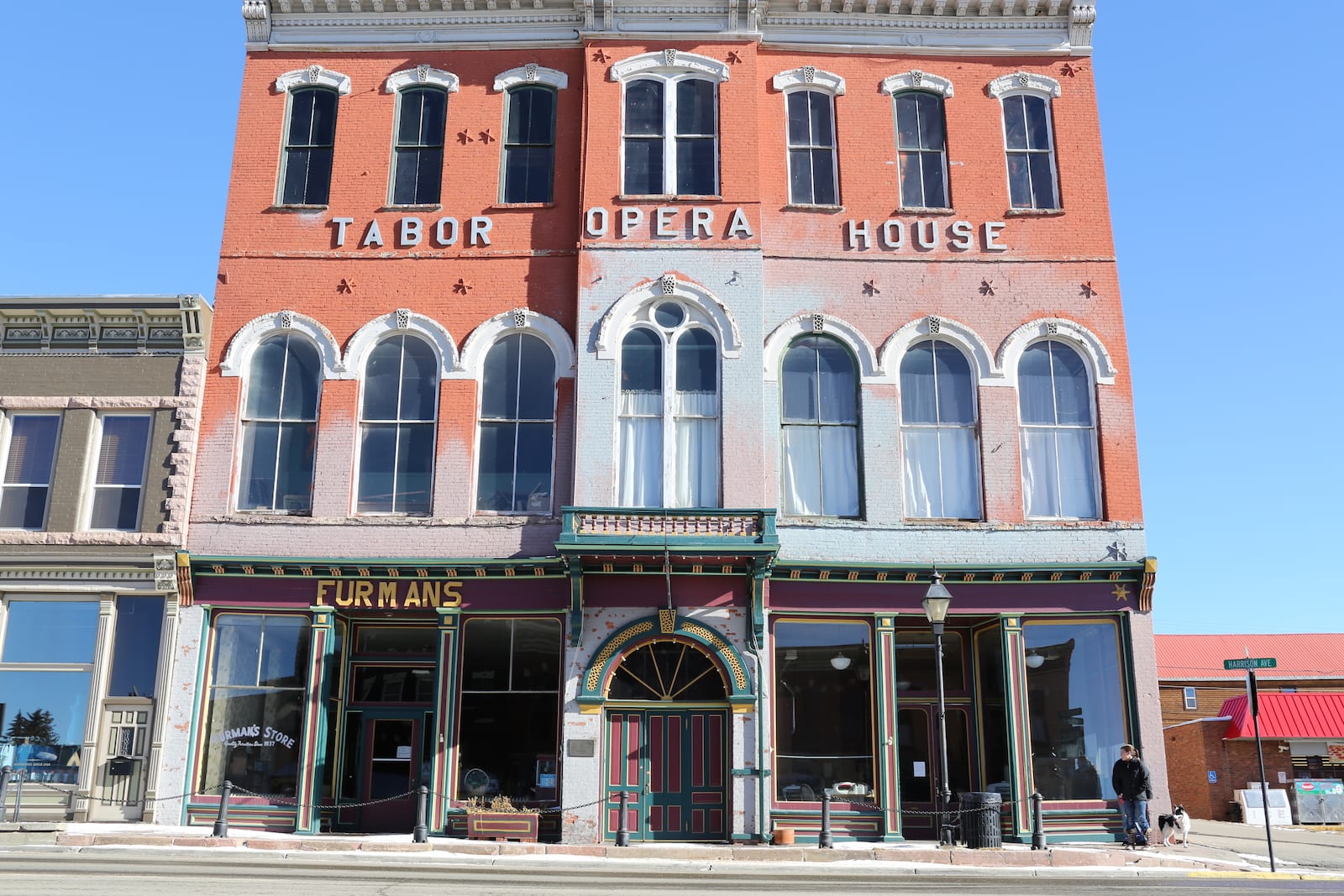
Google “Tabor” today, and you’re far more likely to encounter information about a tax amendment of his namesake long before you reach anything about him or his tragic story. But, even with his comically deep and predictable descent, Horace Tabor once had it all as Colorado’s very own Silver King, and no one can take that away from him.
Adolph Coors
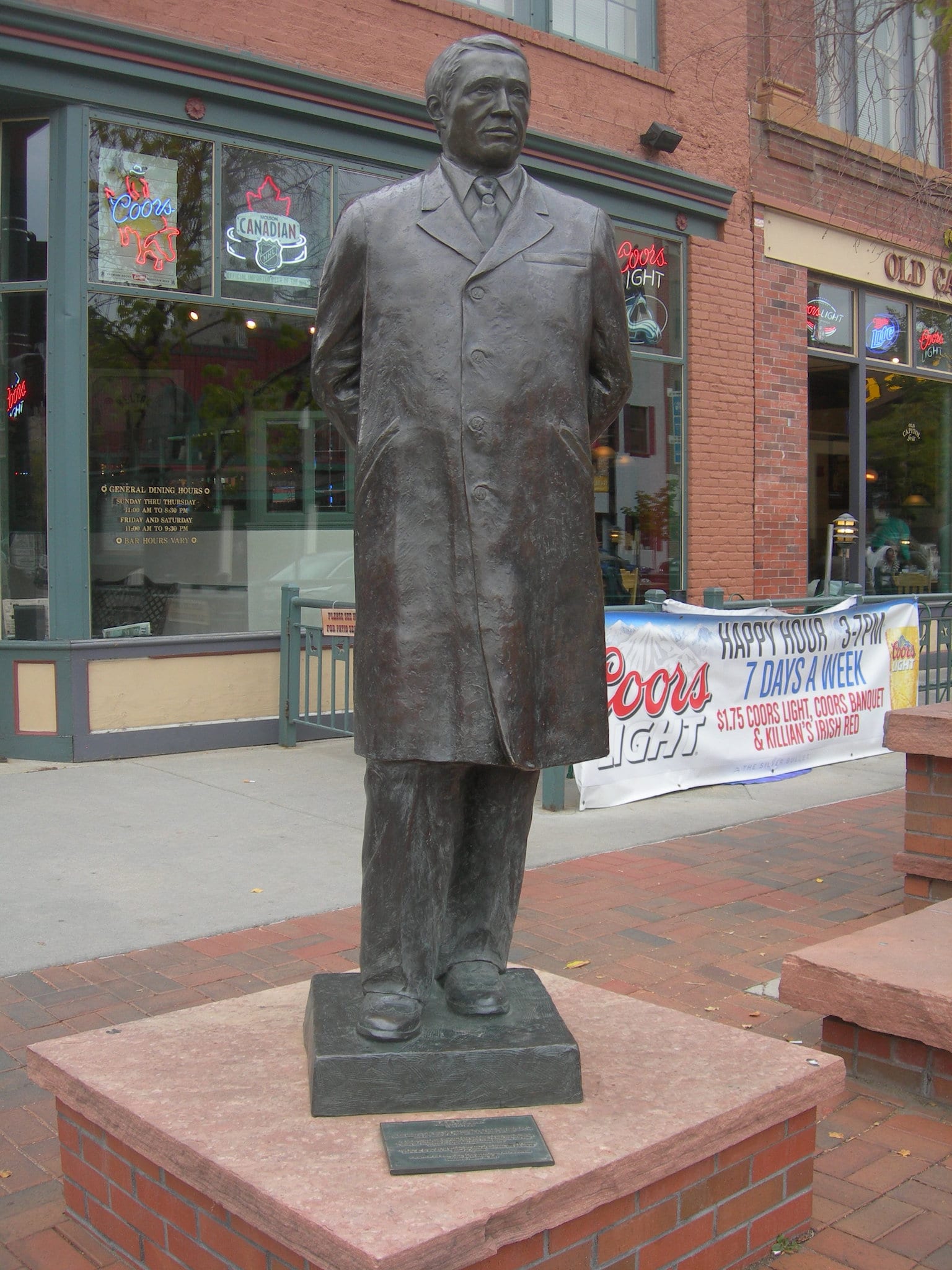
Long before Colorado became known as an internationally beloved beer destination and years before it became an official U.S. State in 1876, Adolph Coors was obsessed with trying to create the perfect beer. Originally, Adolph Herrman Kohrs, before changing his last name to Coors, was the young German native who was first introduced to the world of beer when he worked as an apprentice at a brewery at age 15. It was there that Coors learned how to brew beer and run a large brewery.
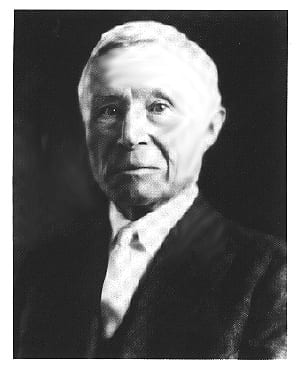
At 21, he immigrated to the United States with no money to his name or knowledge of the English language. He then headed west to Denver, where he worked as a gardener and factory worker to save money to open his brewery, which he did just a year later. In an old tannery building in the city of Golden, Coors brewed a beer that quickly caught on in Colorado and far beyond.
The Coors name grew over the years, but, like all other breweries and distilleries, it ran into trouble during Prohibition when it became illegal to sell and consume alcohol. To make ends meet, the brewery produced cement, porcelain, malted milk, and even a nonalcoholic beer for a short time.
By the time Coors died shortly before the Great Depression, his beer was a beloved fixture in the American West. Despite only being sold west of the Mississippi River for years, beer lovers reportedly drove across the country to buy the brew that Coors spent his life perfecting. Today, Coors beer is so ubiquitous that it’s easy to forget that it hasn’t always existed.

These are just a few of Colorado’s influential figures, but many others are credited for shaping the state into what it looks like today. The state is full of important people who were famous in their lifetime, but are often forgotten in the present day.


 8 Best Caves and Caverns of Colorado
8 Best Caves and Caverns of Colorado